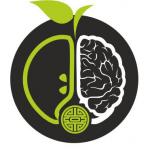Cell Regeneration
The task of energy nourishment is to change the rules that control the transcription and synthesis of the RNA (ribonucleic acid) protein. RNA contains information about the sequence of amino acids in proteins.
The problem here is that the behavior of human cells is limited by two vectors where the primary one is the so called ‘terrestrial vector’, which determines the resonation of the energy within our body at lower vibration levels. This means that, within the space inhabited by man, the process of decay prevails over the process of cultivation. Therefore unless we build the effort necessary to change this resonation, we are bound to be subjected to the parameters of decay or decomposition (simply put, the death parameters).
In this case the second vector (which is the vertical or the celestial one) is subordinated to the first one and, so to speak, serves it. The cell essentially finds itself closed or locked in the structure of the body and starts to focus on similar links – for example genetic links or links defined by the parents or the land. As a result Man does not feel nor understands how to control the cell because he is subordinated to the vibrational indicators of the space he inhabits, i.e. he starts to depend on the linear parameters, and this prevents him from expressing the volume since the higher-frequency vector is not functioning.
Although the synthesis in the cell has volume, the orientation of the energy rotation in the cell depends on the frequency, i.e. this is not done by the ribosome, which has a spherical shape. And since it determines the biochemical reaction and the biosynthesis and consequently the type of energy the cell generates, we become dependent on its filling and orientation. Therefore the energy frequency of the food we consume determines whether we can free the cell from its horizontal stagnation.
This means that what we feed our body is what the cell will process with the help of the ribosome. We should mention here however that with the simplification of the energy, the function of the ribosome is also simplified and brought to a minimum. Yet the ribosome supports two cell functions – the collective and the evolvement functions. Therefore energy food introduces here a certain effort directed at modifying the spatial characteristics of the cell, so that the cell no longer simply assimilates the energy and divides but now starts to generate energy (in this case division may be called improvement). The most important aspect for us here however is the cell’s reorientation.
By ‘reorientation of the cell’ we mean that we make the cell improve its quality. Yet there are different types of cells so we need to examine them grouped according to their orientation.
Our body consists of 70% water
- The brain (horizontally oriented cells) contains 85% crystalline water.
- The blood (horizontally oriented cells) contains 75-85% water.
- The muscles (horizontally oriented cells) contain 75-85% water.
- The liver (horizontally oriented cells) contains 70-75% water.
- The kidney (horizontally oriented cells) contains 83% water.
- The lungs (horizontally oriented cells) contain 80% water.
- The spleen (horizontally oriented cells) contains 80% water.
- The heart (horizontally oriented cells) contains 75% water.
- The bones (vertically oriented cells) contain 25% crystalline water.
- Saliva (tangent oriented cells) contains 99.5% of the crystalline water.
- Fat (vertically oriented cells) contains 15-20% water.
- The tendons (tangent oriented cells) contain 80% crystalline water.
So what do we have here? The platform of our body – unless it receives the necessary food for our bones and tendons – is incapable of correcting or maintaining our orientation (mainly with the help of the brain). Therefore energy food should be examined mainly through the perspective of the bodily systems; and unless we mange to orientate the brain with the help of the marrow, we won’t be able to reorient the cell. And since the basic bodily systems that can orientate our body are the brain, the saliva, the bones and the tendons, they shape the basis for energy nourishment.
This is related both to the orientation of the cell (the dependence on a certain resonance field) and the very properties of the cell. The more complex the structure of the cell, the more significant it is for our body. Of course the most important thing here is the food we provide for our brain, because the brain plays the most significant role of an energy distributor, being at the same time a generator of high-frequency energy.
The quality of the cell membrane depends on the quality of the liquid in general, and on the quality of the highly conductive liquid – in regards to development in particular. In other words, for our brain to live, we need water; and for the development of our brain we need the correct type of water. The brain should always be hydro-active, or else the unity of management in our body will be disrupted.
25 august 2012


